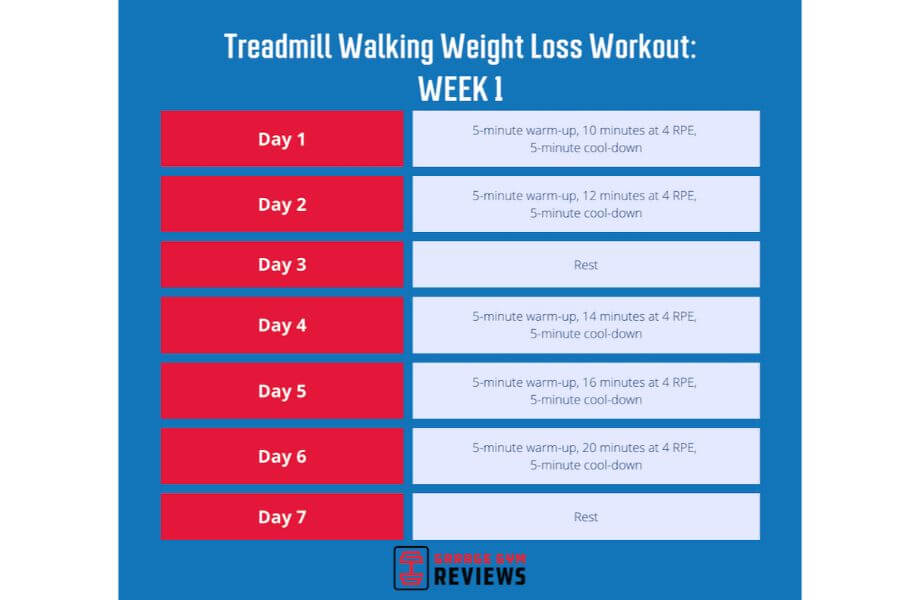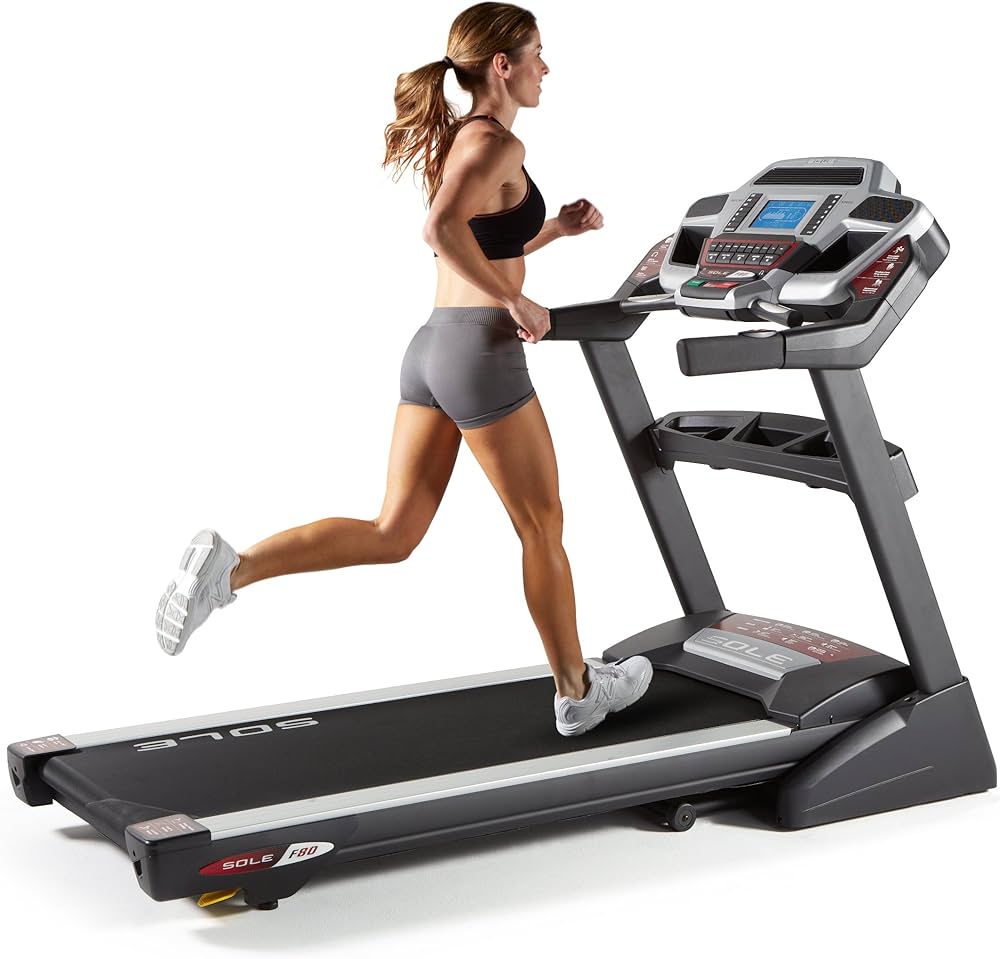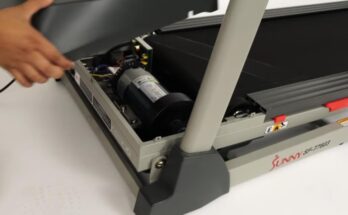A good walking speed on a treadmill for weight loss is typically around 3 to 4 mph. This pace ensures effective calorie burn and increases cardiovascular endurance.
Embarking on a weight loss journey often involves incorporating a consistent exercise routine. Walking on a treadmill is a popular choice due to its convenience and the ability to control the environment. Losing weight efficiently on a treadmill requires maintaining a brisk pace that elevates your heart rate into the fat-burning zone.
It’s important to find a balance between a sustainable speed and an intensity level that challenges your body. Starting with a moderate pace allows for an adjustment period, reducing the risk of injury and promoting long-term adherence to the workout regimen. Regularly walking at this recommended speed can lead to progressive weight loss when combined with a healthy diet and lifestyle choices.
Finding Your Stride: Walking Speed And Weight Loss
Embarking on the journey to shed weight with a treadmill walk is a wise move. Your walking speed is key. It affects how many calories you burn. It’s not just about the numbers on the treadmill. It’s about hitting the pace that maximizes your weight loss.
The Connection Between Pace And Caloric Burn
Up your speed, up your burn. The faster you walk, the more calories you torch. But it’s a balance. Go too fast and you won’t last, making it hard to keep the workout going. Find a middle ground — quick enough to push your body, but sustainable. Here’s a breakdown:
| Walking Speed (mph) | Calories Burned Per Hour |
|---|---|
| 2.0 | 200-250 |
| 3.0 | 300-350 |
| 4.0 | 400-450 |
Calories burned can vary based on body weight and other factors.
Individual Factors Impacting Weight Loss
Your unique body factors influence how you lose weight. Age, weight, and fitness level all play a part. Consider these variables:
- Age: Older adults may burn fewer calories at the same pace as younger ones.
- Weight: Heavier individuals burn more calories doing the same activity.
- Fitness Level: More fit? You may need to walk faster or longer for a challenge.
Start by walking at a pace that makes you breathe harder than usual. But you should still be able to talk. Track your progress and adjust your speed as you get fitter. Using a heart rate monitor can tell you if you’re in the right zone for weight loss. Aim for 50-70% of your maximum heart rate. This is your fat-burning zone.
Ideal Treadmill Settings For Weight Loss
Finding the right treadmill speed is key to shedding pounds. There’s no one-size-fits-all setting. It depends on fitness levels and weight loss goals. A balance of comfort and challenge is important. When set right, a treadmill can be a powerful tool for weight loss.
Starting Speed Recommendations
To start, ease into the workout. Beginners might find a speed of 2 to 4 mph (3.2 to 6.4 km/h) manageable. As stamina builds, aim for 5 mph (8 km/h). This is a brisk walk. It should feel challenging yet sustainable. Listen to your body. If you can talk but not sing, the pace is right.
Adjusting Incline For Increased Intensity
Raising the treadmill’s incline ups the game. Start with a 1% to 2% grade. It mimics outdoor walking. To intensify, gradually increase the slope. Even a small bump in incline burns more calories. Aim for inclines up to 4% or 5% for serious weight loss. This turns a walk into a serious workout.
Possible Table for Incline Intervals| Time (Minutes) | Incline (%) |
|---|---|
| 0-5 | 1% |
| 5-10 | 2% |
| 10-15 | 3% |
| 15-20 | 4% |
| 20-25 | 5% |
| 25-30 | Back to 1% |
Remember, consistency wins the race. Gradual increases in speed and incline prevent burnout. Quick changes might cause injury. Stick to a pace that keeps you coming back for more.
Variations In Treadmill Workouts For Fat Loss
Embarking on a weight loss journey often leads to the trusty treadmill. But not all treadmill workouts are equal in melting away those calories. By adding variations, the path to shedding pounds becomes more effective and far less monotonous. Treadmill workouts can be tailored to fit any fitness level and goal, especially when focusing on fat loss. With a mix of speed, incline, and training methods, there’s a sweet spot for everyone looking to slim down.
Interval Training Techniques
Interval training boosts metabolism and torches fat. This involves alternating between high-intensity bursts and recovery periods. It’s simple:
- Start with a warm-up walk at a moderate pace.
- Raise the speed for a 30-second sprint.
- Slow down for a 90-second recovery walk.
- Repeat the cycle for 20-30 minutes.
By keeping workouts short and intense, the body continues to burn calories long after stepping off the treadmill.
Endurance Walking For Calorie Deficit
Endurance walking sustains a moderate, continual pace over a longer period. Here’s how to do it:
- Warm up at a comfortable pace for five minutes.
- Maintain a moderately intense walking pace.
- Continue for 45-60 minutes, aiming for a consistent speed.
- Cool down at a slow walk for five minutes.
Enhance the challenge with a slight incline to simulate uphill walking. This approach shines in burning calories and building stamina, crucial for a long-term calorie deficit.
Credit: www.quora.com
Monitoring Progress And Making Adjustments
Embarking on a weight loss journey with a treadmill involves more than just walking; it requires tracking and adjusting your exercise regimen. Keeping tabs on your progress ensures you’re on the right track, and tweaking your workout helps you keep challenging your body. Let’s explore how to manage your treadmill routine for optimum weight loss.
Using Heart Rate As A Guide
Knowing your heart rate during exercise is crucial. It tells you how hard your body is working. Aim for a target heart rate zone, typically 50% to 70% of your maximum heart rate for weight loss. Using a heart rate monitor or the sensors on your treadmill can help you stay within this zone. You can determine your maximum heart rate by subtracting your age from 220.
- Find your maximum heart rate: 220 – (your age)
- Calculate target zone: Maximum heart rate x 0.50 to 0.70
- Adjust speed to reach your target heart rate
When To Increase Speed And Incline
As your fitness improves, you’ll need to challenge your body to continue losing weight. Every 1 to 2 weeks, assess your workouts. If they feel easier or your heart rate drops below your target zone, it’s time to increase the speed or incline. Small increments will prevent overexertion while maintaining progress.
| Week | Speed (mph) | Incline (%) |
|---|---|---|
| 1-2 | 3.0 – 3.5 | 1 |
| 3-4 | 3.6 – 4.0 | 2 |
| 5+ | 4.1+ | 3+ |
A simple rule of thumb is to increase the speed or incline as soon as you can maintain your workout without feeling overly fatigued. Remember, consistency trumps intensity, so focus on regular, progressive adjustments to see results.
Supplementing Treadmill Walks To Maximize Benefits
Embarking on the journey to shed pounds on a treadmill involves more than just walking. To turbocharge weight loss, complementing treadmill workouts with smart lifestyle choices is crucial. This section delves into effective methods to enhance the benefits of treadmill walking.
Dietary Considerations For Enhanced Weight Loss
Pairing physical activity with optimal nutrition amplifies fat burning. Here are key dietary tips to follow:
- Consume whole foods: Focus on vegetables, fruits, and lean proteins.
- Avoid sugary drinks: Opt for water or herbal teas instead.
- Watch portion sizes: Use smaller plates and trust your hunger cues.
- Plan meals: Prep ahead to resist unhealthy temptations.
Cross-training For Balanced Fitness
Adding variety to exercise routines prevents plateaus and builds overall strength. Integrate the following cross-training activities:
| Activity | Benefit |
|---|---|
| Strength Training | Boosts metabolism, builds muscle |
| Swimming | Improves endurance, low impact |
| Cycling | Strengthens legs, burns calories |
| Yoga | Increases flexibility, reduces stress |
Remember, consistency is key. Strike a balance between treadmill sessions and these cross-training exercises to keep your fitness journey engaging and effective.

Credit: www.pinterest.com

Credit: www.garagegymreviews.com
Frequently Asked Questions Of What Is A Good Speed To Walk On A Treadmill To Lose Weight
What Is The Best Speed On A Treadmill For Fat Loss?
The best treadmill speed for fat loss varies per individual, but a moderate intensity of 5 to 6 mph is effective for many. Aim for heart rate zones that facilitate fat burning, typically 50-70% of your max heart rate. Always consult a doctor before starting new exercise routines.
How Long Should I Walk On The Treadmill To Lose Belly Fat?
Aim for at least 30 minutes on the treadmill daily, combining moderate and high intensity, to help reduce belly fat.
Can I Lose Weight Walking 30 Minutes On A Treadmill?
Yes, walking 30 minutes on a treadmill can contribute to weight loss, especially when combined with a healthy diet. Regular exercise, like brisk treadmill walking, burns calories and enhances metabolism.
What Is The Best Speed To Walk On Treadmill?
The ideal treadmill walking speed varies per individual but generally ranges from 2 to 4 mph. Beginners should start slow, while seasoned walkers can aim for the higher end. Always prioritize comfort and safety.
Conclusion
Finding your optimal treadmill speed for weight loss involves personal fitness levels and goals. Gradually increasing pace and consistency are key. Remember, balance is essential for sustained health benefits. Start at a comfortable stride, listen to your body, and increase intensity sensibly.
Get walking, stay persistent, and watch the transformation begin.


